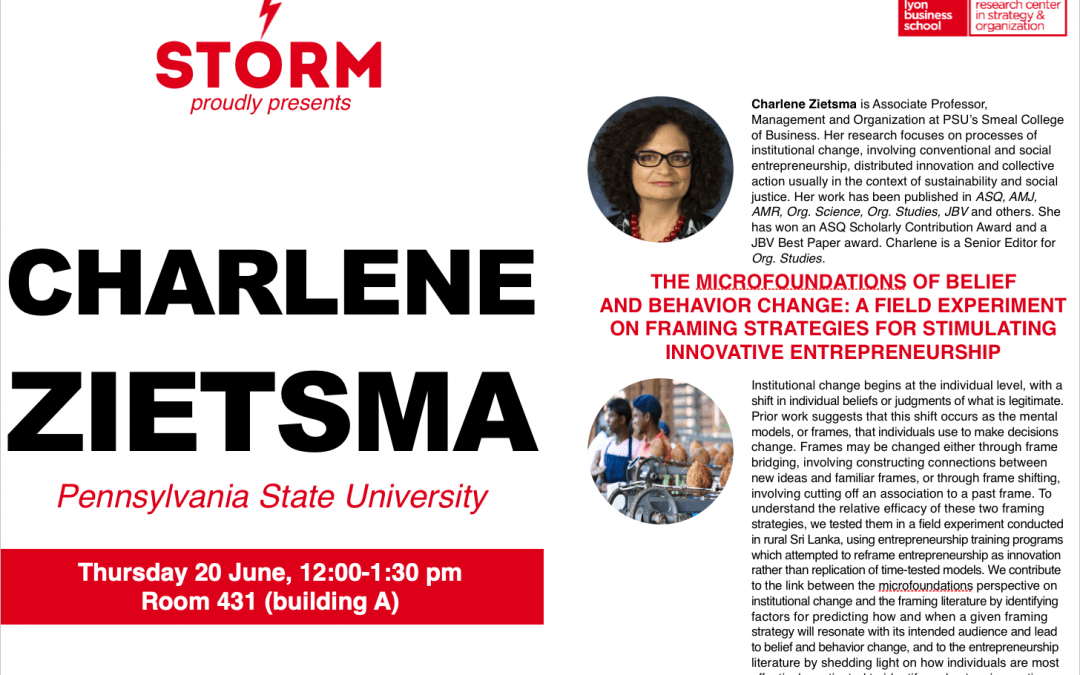The Microfoundations of Belief and Behavior Change: A Field Experiment on the Efficacy of Frame Bridging and Frame Shifting Strategies for Stimulating Innovative Entrepreneurship
Although institutions gain their strength through broad-based social agreement, institutional change begins at the individual level, with a shift in individual beliefs or judgments of what is appropriate, acceptable, and legitimate. Prior work suggests that this shift occurs as the mental models, or frames, that individuals use to make decisions change. Frames may be changed either through frame bridging, involving constructing connections between new ideas and analogous or familiar frames, or through frame shifting, involving cutting off an association to a past frame in order to switch to a new one. To understand the relative efficacy of these two framing strategies in changing perceptions and behavior, we tested them in a field experiment conducted in rural Sri Lanka, using entrepreneurship training programs which attempted to reframe entrepreneurship as innovation rather than replication of time-tested models. Our findings contribute to an understanding of the link between the microfoundations perspective on institutional change and the framing literature by identifying factors for predicting how and when a given framing strategy will resonate with its intended audience and lead to belief and behavior change, and to the entrepreneurship literature by shedding light on how individuals are most effectively motivated to identify and act on innovative opportunities.
Don’t miss Charlene’s interview, by our fabulous PhDs
Interview by emlyon Ph.D. student Muhammad Imran and STORM Post-doctoral fellow Thinley Tharchen. Editing by STORM Post-doctoral fellow Thinley Tharchen.


